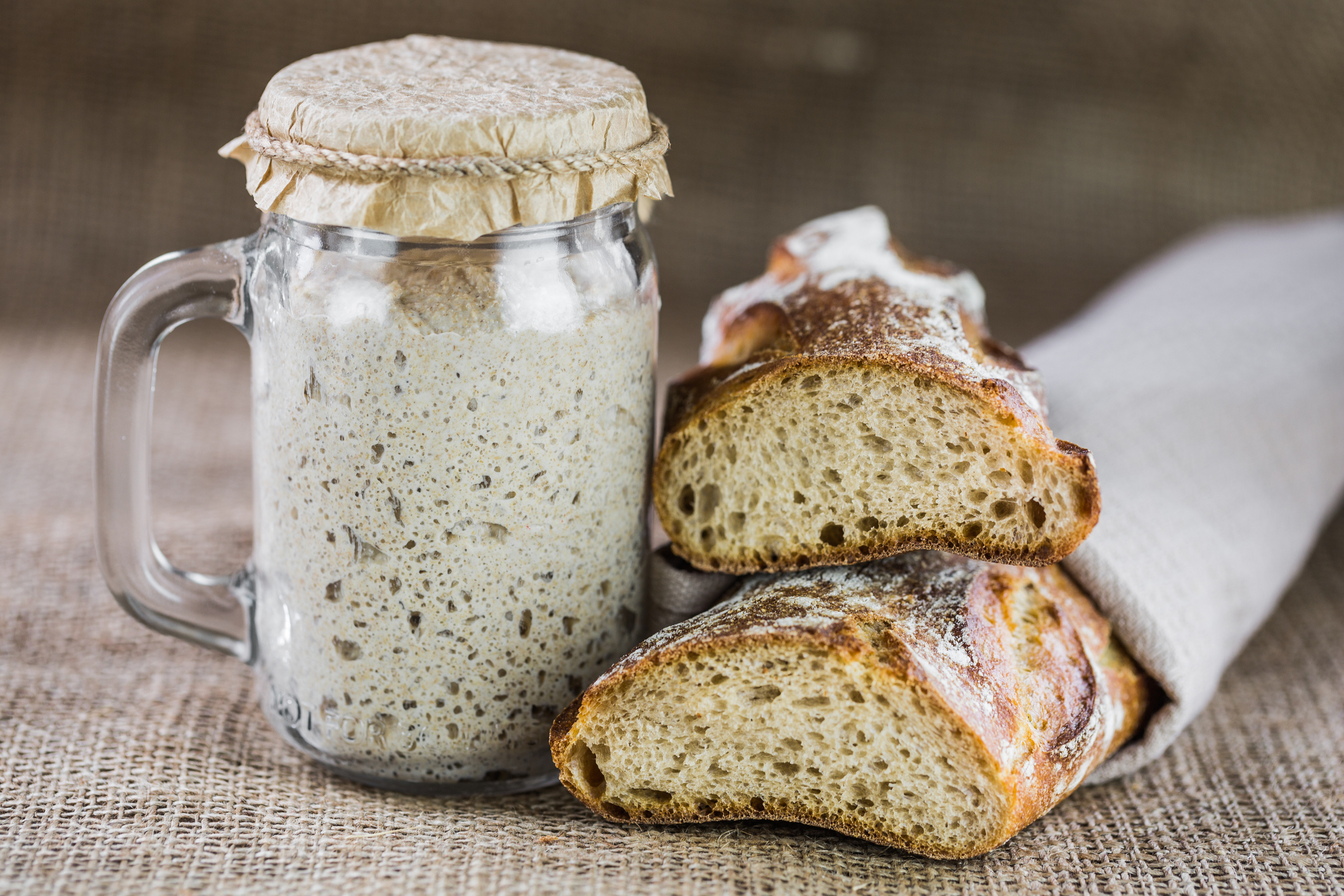

About a year ago, I began eating sourdough bread, and I haven’t eaten any other kind of bread since.
It’s chewy, light, and has a distinctive, earthy flavor that I really enjoy.
But even better, I made a great choice because sourdough bread is infinitely healthier and more nutritious than your average store-bought loaf, either white or wheat.
Recently, I’ve learned more about what makes sourdough bread a natural choice, both for nutrition and ease of digestion.
Once you read about the superior qualities of sourdough bread, you, too, may make the switch.
What makes sourdough bread unique?
Experts believe that the use of grain fermentation to make bread rise originated in ancient Egypt around 1500 B.C. and that it was the main method of leavening bread until baker’s yeast replaced it just a few hundred years ago.
Sourdough bread uses grain fermentation. It begins with a starter, a fermented mixture of flour and water.
The flour and water are mixed together and left to sit. Wild yeasts and bacteria from the flour, as well as bacteria from your hands, then begin to feed on the natural sugars in the flour.
The benefits of lactic acid
The fermented sourdough starter contains a range of healthy bacteria, including lactic acid, which provides several key benefits.
It’s one of the microbes that give sourdough bread its unique flavor and chewy texture.
Lactic acid also makes sourdough bread easier to digest and more filling, perhaps because the lactic acid in sourdough bread can help break down the wheat protein known as gluten.
That’s not to say that people with celiac should dive right in and start eating tons of sourdough bread. But research has shown that people with gluten sensitivity find sourdough bread easier to digest than bread made with baker’s yeast.
High nutritional value of sourdough bread
Sourdough offers higher nutritional value than yeast bread.
That’s partially because the fermentation process breaks down phytic acid, a compound that blocks nutrient absorption.
And sourdough has plenty of nutrients waiting to be absorbed. A two-ounce slice contains:
- Selenium – 32 percent DV (daily value)
- Folate – 21 percent DV
- Thiamine – 21 percent DV
- Niacin – 20 percent DV
- Riboflavin – 17 percent DV
- Manganese – 15 percent DV
- Iron – 13 percent DV
- Copper – 10 percent DV
Good for blood sugar and heart health
Researchers believe that the fermentation process reduces the glycemic index of sourdough bread by changing the structure of carbohydrate molecules, thus slowing down the speed with which sugars enter the bloodstream.
One study found that people who ate sourdough bread had a significantly lower blood sugar spike after thirty minutes than those who ate bread made with baker’s yeast.
And sourdough bread has some heart benefits, too.
Sourdough fermentation boosts the number of polyphenols in flour. Polyphenols, as we know, are plant compounds found in berries and other fruits and vegetables that may help fight heart disease, as well as cancer, type 2 diabetes and Alzheimer’s.
How to make sourdough bread
It’s really not difficult to make your own loaf of delicious sourdough bread. A jar, some flour, water, and salt are all you’ll need on hand.
Here are two beginner’s recipes: one for the starter and one for baking the bread.
Beginner sourdough starter recipe
A step-by-step guide to making sourdough bread
Sources:
All About Sourdough — Nourish (Web MD)
All About Sourdough — Healthline
Sourdough-leavened bread improves postprandial glucose and insulin plasma levels in subjects with impaired glucose tolerance — Acta Diabetologica
